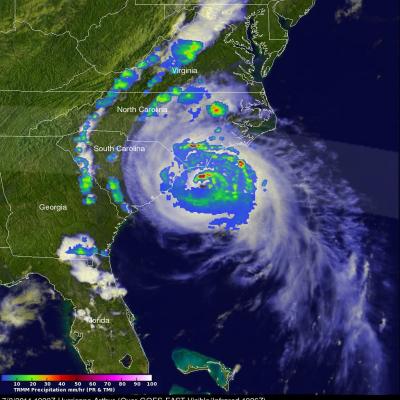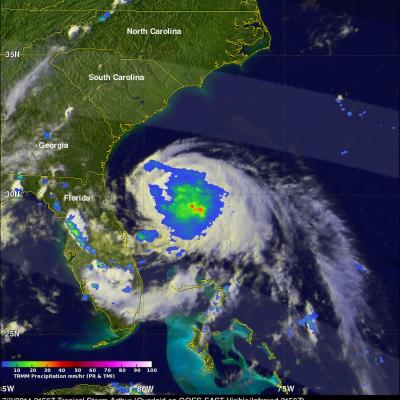Neoguri A Little Weaker
TRMM satellite had another good view of typhoon NEOGURI on July 8, 2014 at 0545 UTC. With wind speeds of 110 kts (about 127 mph) NEOGURI had weakened to a strong category three typhoon. A rainfall analysis from TRMM's Microwave Imager (TMI) and Precipitation Radar (PR) is shown overlaid on a MTSAT Visible/Infrared image from 0600 UTC. Rainfall was measured by TRMM PR falling at a rate of over 117 mm (about 4.6 inches) per hour in a rain band affecting Okinawa. A simulated 3-D view (from the east) shows NEOGURI's rainfall structure at the time of this TRMM satellite pass. Powerful thunderstorms





